UK General Election Betting – On Or Before 12th December 2024
 Bookmakers, as well as pretty much anyone else in the world, were taken by surprise when then Prime Minister Theresa May called a snap UK general election for the 8th June 2017. Many agree the move backfired as the Tories lost the slim majority they did have resulting in a hung Parliament, however those betting on a poor Conservative / strong Labour result ended up cashing in on great odds.
Bookmakers, as well as pretty much anyone else in the world, were taken by surprise when then Prime Minister Theresa May called a snap UK general election for the 8th June 2017. Many agree the move backfired as the Tories lost the slim majority they did have resulting in a hung Parliament, however those betting on a poor Conservative / strong Labour result ended up cashing in on great odds.
Two years on 12th December 2019 later we had another election, the third in four years, despite the fixed term parliament act, which was designed to stop rapid elections. This time however the results did follow the polls with the Conservatives securing a strong majority on the promise to ‘Get Brexit Done’.
The next UK General election will take place in before January 2025, although it is likely to be the autumn of 2024.
On this page you will find all of the latest betting offers for the UK election as soon as they come in, including the best enhanced odds, money back and free bet promotions from top UK betting sites.
Many bookies are now getting seriously scared of election markets following serial political shocks of late: May losing her majority, Brexit and the election of Donald Trump. Fortunately there are many great betting sites that will take the challenge and still give great odds and promotions.
UK General Election Betting Offers for 2024
This event has not started yet, please check back nearer the time. For other offers see our main loyalty page.
Open To All Customers

Best Bookmakers for Betting on the Election
Coral
Ladbrokes
How to Bet on the Election
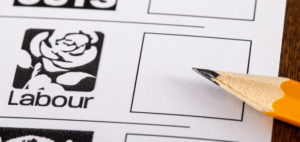 The election on the 8th June 2017 presented punters with a unique betting opportunity. The lack of a long lead up and months of speculation meant both the polls and the betting markets were largely unsure of what will happen.
The election on the 8th June 2017 presented punters with a unique betting opportunity. The lack of a long lead up and months of speculation meant both the polls and the betting markets were largely unsure of what will happen.
Following the many unexpected political results of recent years many more people bet on the 2017 election than ever before and those that took advantage of big prices, just as had been done with Trump and Brexit, found big gains on election night.
 Shortly after the snap election was called punters could get over 10/1 on a hung parliament, over 20/1 for Labour to get 251+ seats and similar odds for the Conservatives to get less than their 2015 total of 330.
Shortly after the snap election was called punters could get over 10/1 on a hung parliament, over 20/1 for Labour to get 251+ seats and similar odds for the Conservatives to get less than their 2015 total of 330.
The 2019 election, however, was the first since 2010 to go pretty much in line with the polls, the Conservatives winning a comfortable majority of 80 and Labour suffering their worst defeat since 1935. Still this in the modern age now seems to be the exception to the rule.
With another early election probable in the not too distant future it seems best to get in to the market as early as possible.
General Election Betting Markets
- Most Seats – This is the main betting market for the election, basically this is betting on the winner in the final result. This doesn’t necessarily mean a party will win enough seats to form a government simply more seats than any other party.
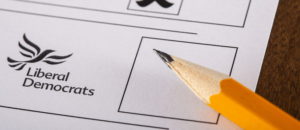 Overall Majority or No Majority – In order to form a government a single party must win over half the seats contested. In the UK there are 650 seats. You can also bet on no overall majority.
Overall Majority or No Majority – In order to form a government a single party must win over half the seats contested. In the UK there are 650 seats. You can also bet on no overall majority.- Total Seats – Bet on the exact number of seats to be won by a party. This market can be found as Over/Under, e.g. bet on the conservatives to win over/under 375.5 seats or in ranges, e.g party to win 250-275, 275-300 seats, etc.).
- Local Seat – Closer to the election you should be able to bet on which party will win any of the 650 seats up for grabs.
- Turnout Percentage – Bet on the percentage of the voting adult population that will actually turn out and cast a vote. This can be round as a range (e.g 65.01-70%, 70.01 % or more, etc.) or as an equal odds 2-way over/under market (e.g. over/under 63.5% at odds of 5/6).
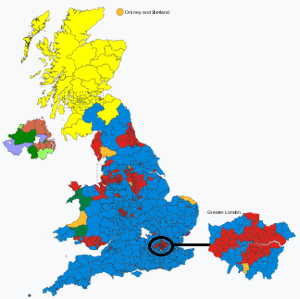 Special Bets – The wonders of online betting now means there are a multitude of special bets you can place, especially as the election draws closer. These include betting on individual MP’s to lose their seats, betting on seats/majority in the individual nations of the UK, etc.
Special Bets – The wonders of online betting now means there are a multitude of special bets you can place, especially as the election draws closer. These include betting on individual MP’s to lose their seats, betting on seats/majority in the individual nations of the UK, etc.- Next Party Leader – Not strictly an election market but considering the likelihood of party leaders losing their jobs if they lose badly its a good one to keep an eye on.
- Over/Under (2-Way) – Many of the markets listed above are also available in an Over/Under format, also called a 2-Way market. These allow you to basically guess higher or lower with fairly equivalent odds either way. This could be conservatives to win over or under 350.5 seats, both roughly evens for example, or there to be over or under a 63.5% voter turnout, etc.
General Election FAQ
- Why did we have a snap election in 2017 & 2019? Theresa May in 2017 and Boris Johnson in 2019 both decided that needed a mandate from the British people to effectively implement their Brexit strategies. This failed for May who actually lost seats and was forced to form a coalition with the DUP that lasted for two years but failed to convince the house to vote through her withdrawal agreement. Boris Johnson succeeded in 2019 where May failed winning a large majority to allow his Brexit bill to be passed.
- How many seats are there in the UK General Election? There were 650 seats contested in 2017 and 2019. Boundary changes are due to come in reducing the number of seats to 600 but this will only apply to elections after 2020. The seat boundaries for any election before 2020 are the same as those in 2019.
- How many seats in each country? There are 533 seats in England, 59 in Scotland, 40 in Wales and 18 in Northern Ireland.
- How many seats does each party have now? Following the 2019 election the Conservatives hold 365 seats (up from from 318 in 2017), Labour 203 (down from 262), Scottish National Party (SNP) 48 (up from 35), Liberal Democrats (Lib Dems) 11 (down from 12), Plaid Cymru 4, Green Party 1, Democratic Unionist Party 8 (down from 10), Sinn Fein 7 (they do not take up seats), Social Democratic and Labour Party (SDLP) 2 (up from 3), Alliance Party 1.
- How many seats are needed for a majority? You would think you would need 325 seats (half of 650) to have a majority but in reality less are required as Northern Ireland’s Sinn Fein party, who do not take up their seats, reduce this. Sinn Fein now currently have 7 seats. A Party will therefore likely need 321-2 seats or more for a working majority this time around.
- What is the current majority? There is a current majority of 80, with the conservatives are the biggest holding 365 seats. Even if all opposition parties now cooperate they will need at least 40 conservatives to vote with them (assuming all MP’s vote yes or no).
- How many political parties are there? There are 428 Parties in Great Britain and 36 in Northern Ireland. In reality only a small few of these stand any chance of winning seats.
- What is first past the post? In the UK the winner of a seat is simply the first person to achieve more votes than any of the other parties contesting that seat, irrespective of the percentage of people who actually vote for them. There are no second rounds of voting or second preference votes in the UK general election. Votes can be recounted if the count is close and a candidate requests it.
- What is a coalition government? If one party wins enough seats then the Queen can ask the party leader to form a government. If one party does not achieve enough seats they can form coalitions with other parties to achieve a majority and form a coalition government (this occurred in 2010 between the Lib Dems and Conservatives). If a coalition government cannot be formed either a single party can govern as a minority government or a new election will be called and the current government will remain in power until this time.
- What is turnout in an election? There are over 45 million registered voters in the UK. If all turned out to vote the percentage would be 100%. In reality a lot of people do not vote. The turnout for the 2019 election was 67.3%, down 1.4%, in 2017 it was 68.7% up 2.3% from 2015. The 2017 turnout was the highest for a long time and may be due to greater voter engagement of late due to Brexit along with one of the highest turnouts of young voters in a generation. In 2019 the slightly lower turnout was likely due to the fact it was a December election and it was cold and wet with many people that would have voted in the summer staying in this time around.
- What is a poll? This is a sample of opinions from the electorate (the voters) that attempts to predict what the result will be. Although polls have always been seen as a good benchmark they have been catastrophically wrong lately, in the 2017 election, the EU referendum and the American presidential election. Then again they were almost spot on in 2019. Take all polls with a pinch of salt.
- What is an exit poll? This is the final poll taken, usually by people standing outside polling stations asking people how they voted. This is the most reliable type of poll although by the time this is released voting will be closed – you can still however bet right up until the final result is announced.
- What is the popular vote? Parties that win the most total votes don’t always win elections. Due to the first past the post system a party can in theory have a higher percentage of people voting for them but achieve less seats, this is known as the popular vote. The UK general election result all depends on the number of seats won not the proportion of people who vote for a given party.
- Who will win the next general election? Given the current political state in the UK and the huge failure of polls of late who knows, although there does seem to be a swing towards Conservatives in traditionally social heartlands of the North of England especially. Labour suffered their worst defeat in 84 years in 2019 and will need to go a long way to get anywhere near a majority again. This is compounded by the fact other parties now take more of the opposition vote, such as the SNP which controls most of Scotland. It is hard to see anything other than another Conservative government or a coalition.
- Will Brexit still have an effect? Now there is an overall majority this should result in a conclusion for Brexit, but then the process is long and could take more than an entire parliamentary term to fully complete. It is highly likely Brexit, or the result of it, will be a large factor still in the next election.
- Who could end up as Prime Minister? Any leader who’s party stands in enough seats to win an overall majority could be the next PM. In reality only the Labour or Conservative leader can now end up as PM right now.
- What is left wing, right wing and centre in politics? This is a historical division, the Tories traditionally sit on the right wing of the commons and the main party in opposition (currently Labour) on the left wing. This is where right and left wing phrase comes from, generally right wingers align to conservative values and left wing to Labour values. Many parties, and indeed individual MP’s, describe themselves as centre, left of center or right of centre, this means they share aspects from both right and left wing policies. The Lib Dems for example are seen as a centre party.
Previous Election Results (Since 1918)
| Election Year | Winner* | Majority# | Turnout |
|---|---|---|---|
| 1918 | Conservative / Liberal | 238 | 57.20% |
| 1922 | Conservative | 74 | 73% |
| 1923 | Labour / Liberal | No Majority (-98) | 71.10% |
| 1924 | Conservative | 210 | 77% |
| 1929 | Labour | No Majority (-42) | 76.30% |
| 1931 | National Labour | 492 | 76.40% |
| 1935 | Conservative | 242 | 71.10% |
| 1945 | Labour | 146 | 72.80% |
| 1950 | Labour | 5 | 83.90% |
| 1951 | Conservative | 17 | 82.60% |
| 1955 | Conservative | 60 | 76.80% |
| 1959 | Conservative | 100 | 78.70% |
| 1964 | Labour | 4 | 77.10% |
| 1966 | Labour | 98 | 75.80% |
| 1970 | Conservative | 30 | 72% |
| 1974 (Feb) | Labour | No Majority (-33) | 78.80% |
| 1974 (Oct) | Labour | 3 | 72.80% |
| 1979 | Conservative | 43 | 76% |
| 1983 | Conservative | 144 | 72.70% |
| 1987 | Conservative | 102 | 75.30% |
| 1992 | Conservative | 21 | 77.70% |
| 1997 | Labour | 179 | 71.00% |
| 2001 | Labour | 167 | 59.40% |
| 2005 | Labour | 66 | 61.40% |
| 2010 | Conservative / Lib Dem | 78 | 65.10% |
| 2015 | Conservative | 12 | 66.10% |
| 2017 | Conservative / DUP | 3 | 68.4% |
| 2019 | Conservative | 80 | 67.3% |
| 2024 | ? | ? | ? |
* Winner is classified as the party or coalition that forms a government
# Majority when government is formed




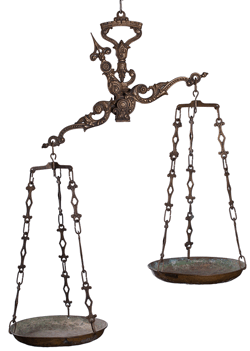
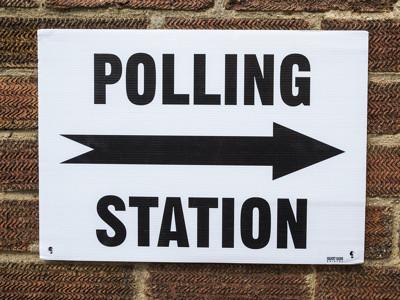 ;
; ;
; ;
;

